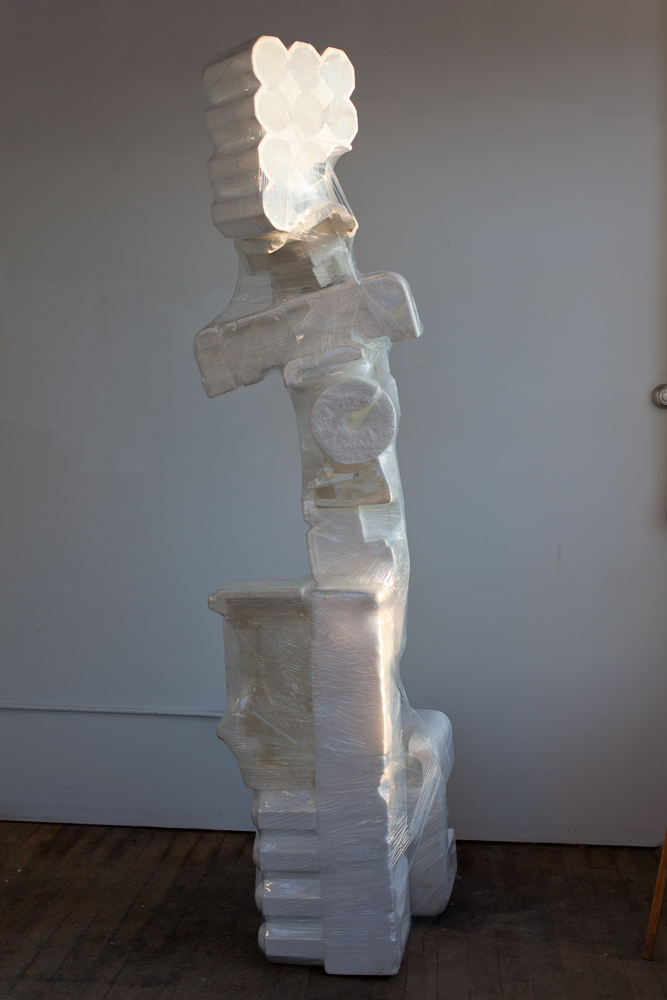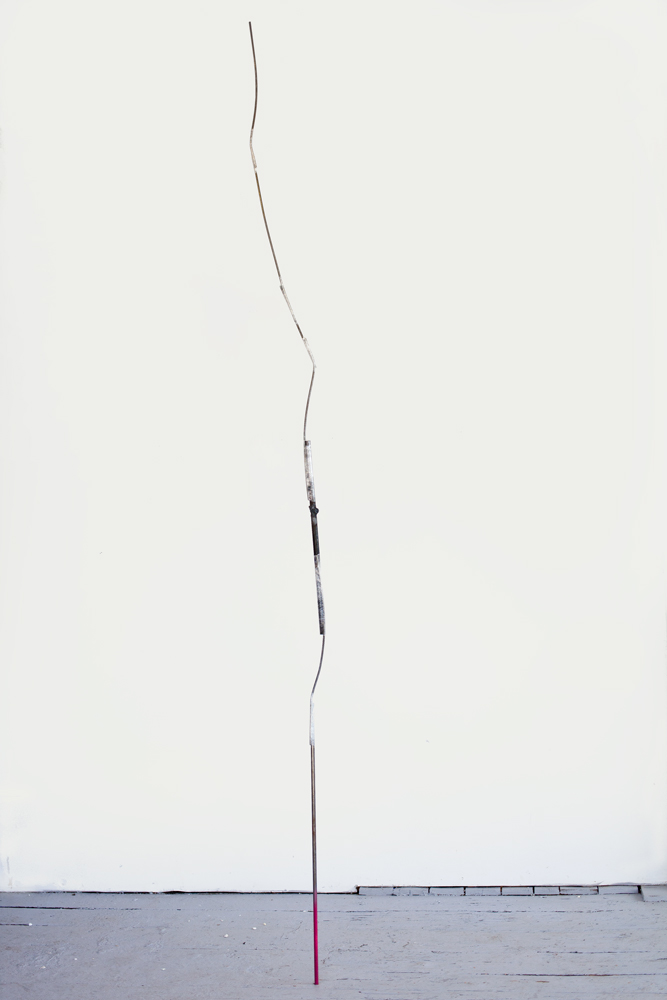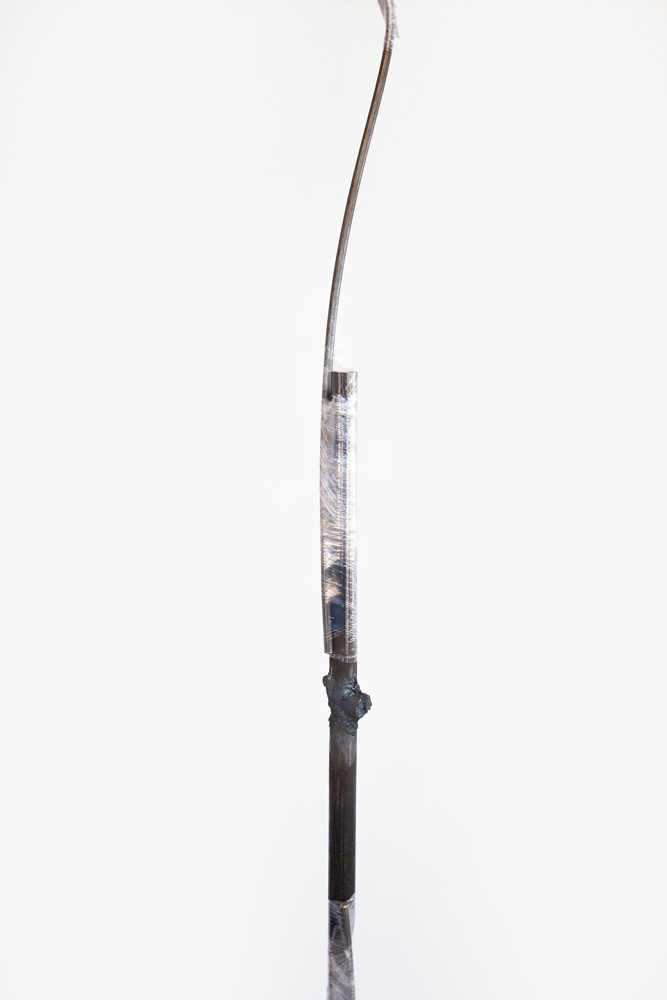Wrap
2015



Venus - stryofoam, plastic wrap

Caprice - Wood, styrofoam, glass, plastic wrap

Fourth Terrain - Wood, steel mesh, plastic wrap


Uncle Title - Steel, plastic wrap

White River Junction - Wood, paper, oak seeds, plastic wrap

2014:
I'm using shipping plastic wrap as a frictious skin to hold pieces of found material together. They come in various shapes and sizes - some free-standing, some hung on the wall. I consider all of them sculpture, as the wrapping is an integral component of their construction.
This plastic skin is an exoskeleton that only functions when held in tension by its cargo. The majority of the industrialized world relies on this wrap to protect products in transit. Large shipping pallets stacked high with food, electronics, machinery, textiles etc. are held together with plastic wrap. Our food is sold to us saran-wrapped in the name of freshness, but rendered homogenous with a vacant brightness. Art is often wrapped for shipment for similar reasons. In all cases, the skins are thrown away once the goods reach their destination. Made of either PVC or low density polyethylene, it sits in landfills for thousands of years.
The architect Toyo Ito talks about Saran wrap (the physical thing and the philosophy inherent) in his essay "Saran Wrap City". He writes "To manifest the Saran wrap - in other words, to give that transparent film a structure - is to produce a 'device that generates phenomena'. It doesn't exist as phenomena itself; it is a substance that produces and enables phenomena. It is a devise that generates landscape, a device that visualizes the flows of invisible things like air, and a device that hints at human activity...It is impossible for us to make foodstuffs covered in Saran wrap appear to be the genuine article. We can, however, beautifully visualize the Saran wrap itself. I think that the future of architecture now depends on how we reveal the structures of these fictions." (Tarzans in the Media Forest, AA Publications p. 99)
By studying and reinterpreting this method of shipping, preservation, and pollution, the project highlights an ignored piece of our everyday environment to interpret the ideologies on which it is based.